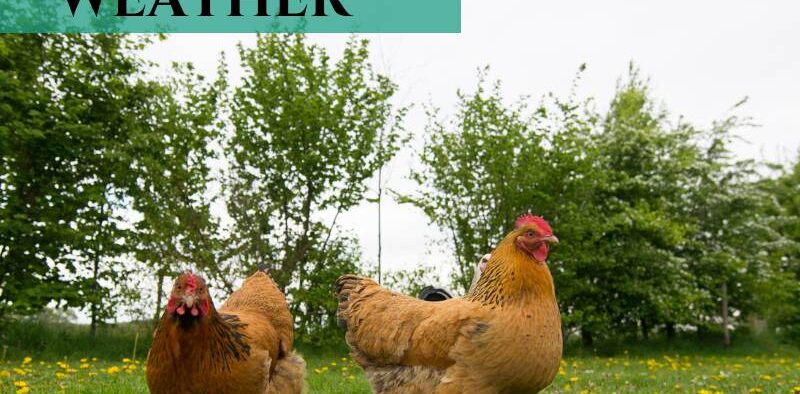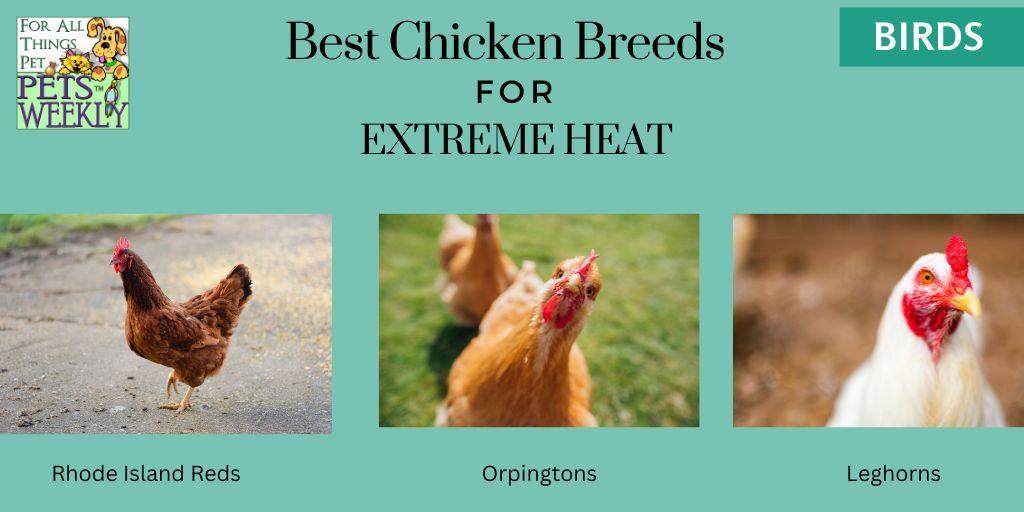Choosing the Best Chicken Breeds for Extreme Climates
Share

Dreaming of a backyard filled with contentment clucks and fresh-laid eggs? Hold your horses (or should we say, roosters?). Before welcoming feathered friends into your flock, consider the most crucial factor: your climate! Extreme heat or bone-chilling winters can be tough on tender chicks. Fear not, new flock leader, for this guide breaks down the best chicken breeds for extreme climates (both hot and cold).
But, before we get to far with our favorites, remember that the BEST source of information for your exact region is other chicken keepers in your exact region! Chances are excellent that there are a few near you. Check out NextDoor or join a Facebook group for your area. Most chicken lovers enjoy sharing their information.
For Those with Sizzling Summers
The sun beats down, turning your backyard into a feathered sauna. Dust devils dance between the coops, and your normally chatty hens become silent shadows, seeking refuge from the scorching rays. We’re looking at you, Arizona, California, New Mexico and Texas. But, summer doesn’t have to spell doom for your backyard birds! With the right breeds and a bit of ingenuity, you can keep your chickens cool, calm, and cackling even when the mercury soars.
Choosing the right breed for your harsh climate is crucial. Some breeds are just better adapted for heat and cold. Does it mean you can’t enjoy all breeds? Absolutely not. But, choosing a breed who enjoys the desert heat is a kinder way to build your flock.
Rhode Island Reds
These fiery red hens are as tough as their namesake state. Their loose feathers and single combs let air circulate, keeping them cool. Plus, they’re prolific egg layers, rewarding you for braving the heat with breakfast!
Orpingtons
Don’t let their fluffy feathers fool you! Orpingtons are surprisingly heat-tolerant thanks to their well-ventilated bodies. They come in a variety of cool shades, like buff and black, to reflect the sun’s rays.
Leghorns
These energetic egg machines originated in sunny Italy, so they know a thing or two about beating the heat. Their active nature helps them stay cool, and their sleek bodies minimize heat absorption.

Beat the Heat with These Tips
Plan ahead for the sizzling summer with these handy tips. Remember, your chickens (no matter the breed) will need extra attention during the hot summer days.
- Shade Sanctuary: Shade is gold! Provide ample shady areas in your run, using tarps, trees, or even a strategically placed kiddie pool umbrella. Remember, shade moves with the sun, so position it accordingly throughout the day.
- Mist Me, Baby: Spritz your chickens gently with a cool misting bottle, especially their heads and wattles. It’s like a spa day for your hens! Just avoid saturating their feathers, as this can trap heat.
- Frozen Treats: Fill shallow dishes with ice cubes or frozen fruits like watermelon or berries. It’s a tasty way to keep them hydrated and entertained while they peck at the coolness. Think chicken popsicles and frozen watermelon treats!
- Water Works: Fresh, clean water is essential year-round, but even more so in hot weather. Ensure their bowl is full and clean, and consider automatic waterers and dripping systems to keep the water cool and flowing. Invest in automatic waterers or misters, and refill bowls frequently.
- Coop Cool Down: Ventilation is key! Make sure your coop has good air circulation, but avoid drafts. Consider adding fans or vents, and keep the walls well-insulated to block the sun’s heat.
- Dust Busters: Dust baths are a natural cooling technique for chickens. Create dust wallows in shady spots and keep the dirt loose and fluffy. Think chicken spa days and mud volcano mud baths! Toss some food-grade Diatomaceous Earth down for some bug-killing power.
Chicken Breeds for the Frozen Frontier
While some dream of sunny beaches, others crave the invigorating chill of a winter wonderland. But for your feathered friends, extreme cold can be a feather-ruffling challenge. Fear not, intrepid flock leader, for there are chicken breeds out there tougher than a polar bear’s beard, ready to conquer the coldest climates and keep your coop clucking with joy even when the frost bites.
Wyandottes
These feathered snowballs are built for blizzards! Their thick feathers and pea combs insulate them from the cold. Plus, they’re calm and docile, content to snuggle up in the coop during icy spells. Picture a fluffy snowball with a sassy attitude. That’s the Wyandotte! Their thick feathers and pea combs insulate them like a built-in parka, while their calm demeanor means they’re happy to snuggle up and weather the storm. Prepare for a coop full of fluffy serenity, even when the wind howls.
Australorps
Hailing from chilly Down Under, Australorps are practically penguins in disguise. Their dense feathers and black plumage absorb heat from the sun. They’re also excellent layers, keeping your breakfast toasty even when the mercury plummets. These black beauties hail from Down Under, where they’ve learned a thing or two about surviving the frosty outback. Their dense feathers and black plumage absorb heat from the sun, making them walking solar panels. Be prepared for a steady stream of delicious, toasty eggs even when the temperature plummets.
Brahmas
These gentle giants are nature’s fur coats! Their massive size and fluffy feathers create a built-in thermal barrier. They’re also surprisingly good at foraging, finding tasty treats even under a blanket of snow. Imagine a feathered giant with a beard that would make Santa jealous. That’s the Brahma! Their massive size and fluffy feathers create a natural thermal barrier, keeping them warm even in the deepest freeze. Plus, they’re excellent foragers, finding tasty treats under the snow like feathered snow plows.

Beat The Cold with These Coop Warming Comforts
Planning ahead for the short winter days is important when raising chickens. These tips will help you keep your chickens warm!
- Insulation is Key: Transform your coop into a feathered fortress by adding insulation to walls, roof, and floor. Draft-proofing is crucial to keep wind at bay.
- High-Calorie Chowdown: Adjust your chickens’ feed to provide extra energy during cold months. Consider higher-calorie options like corn or oats.
- Cozy Coop Treats: Offer treats like warm oatmeal or chopped apples to give your chickens a little extra energy boost on frosty mornings.
- Ventilation with a View: Good ventilation is essential to prevent moisture build-up and frost, but avoid drafts. Consider a roof vent or strategic windows that open on warmer days.
- Deep Litter Delight: Use the deep litter method in your coop. This involves layering bedding like straw or wood chips, creating a natural heat source as it decomposes.
- Insulated Igloo: Make sure your coop is well-insulated to trap precious body heat. Straw, hay, and even blankets can help create a warm haven.
- Draft Dodgers: Seal up any cracks or drafts in the coop to prevent cold air from sneaking in. A well-ventilated coop is still important, but you want to avoid windchill factors.
- Water Worries: Don’t let water bowls freeze! Invest in heated water bowls to ensure your chickens have access to fresh, unfrozen water throughout the winter.
- Heat Lamps? Maybe…: The jury is out on whether heat lamps are good to use in coops. Definitely ask professional chicken keepers in your region before you install! Fire is a very real hazard in chicken coops, so be sure you choose wisely if you do install one.
Remember, every chicken is an individual, so observe their behavior and adjust their care accordingly. With the right breed, a cozy coop, and a little extra TLC, your feathered friends can strut their stuff through the coldest winters, proving that even when the snow falls, life’s still a coop-tastic adventure!
Always remember to consult with other chicken keepers in your area. They will have the best and most educated information in keeping chickens safe in your area!










